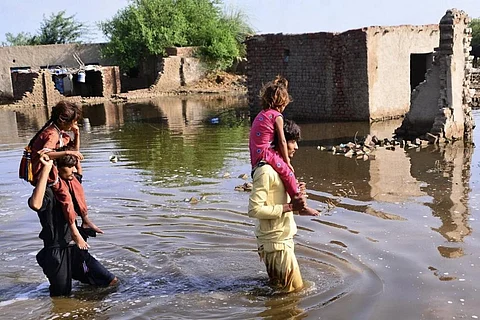

The 27th Conference of Parties (COP27) to the United Nations Framework Convention on Climate Change (UNFCCC) ended November 20, 2022 in Sharm El-Sheikh with the highlight being the formation of a ‘loss and damage’ fund.
COP27 also requested parties to strengthen the 2030 targets in their nationally determined contributions to align with the 1.5 degrees Celsius goal by next year. But a series of climate datasets analysed by Down To Earth shows that the clock is ticking. Fast.
DTE also mapped various future scenarios going forward. And the picture that emerges is alarming if greenhouse gas emissions continue.
For over 6,000 years, humans have restricted their habitat settlements to an annual average temperature of 11 to 15°C or climate niche. Only 0.8 per cent of the world’s land surface experienced an annual temperature of more than 29°C as of 2020.
But in a warming world, if emissions go unabated, this range could rise to 19 per cent of the Earth’s surface, affecting three billion of the projected nine billion people, by 2070. India, according to the research, would be one of the worst-hit countries in Asia.
In a warming world, ‘climate suitability’ would stretch to even the sparsely populated polar regions of the world.
This expansion of the climate niche threshold could trigger the next wave of migration for people looking to locate to more temperate regions.
DTE mapped migration hotspots according to the World Bank’s Groundswell Part 2 report to identify how migration in the future would look like. Some 216 million people will be migrating within their own countries according to the report.
Migration is often influenced by various reasons — socio-economic, political and environmental. Sub-Saharan Africa will report the maximum number of internal migrants, up to 40 per cent of global migration. Countries in the East Asia and the Pacific region (23 per cent) and those in south Asia (19 per cent) are the next hotspots globally.
The Global South will bear the maximum burden of internal migration, according to the report. Reasons might vary from region to region, depending on various climate change-related issues like water scarcity or rising sea level.
Climate change is a global phenomenon. But a common thread across the various datasets analysed by DTE was how sub-Saharan Africa will be disproportionately affected due to global warming.
The region stretching from Senegal in the west to Somalia in the east of the continent will be the hardest-hit if emissions are not reduced. Niger will be experiencing 238 days of temperature hovering over 35°C, followed by Mali (231) and Sudan (223).
COP27 made some headway into initiating the ‘loss and damage’ fund. However, the big question that is being asked is which countries can lay claim to this fund?
The whole of the Global South will be affected as mortality costs will eat into much of their gross domestic product (GDP). In Niger — the most heat stress-affected country — mortality costs would eat 16 per cent of ithe GDP, followed by Sudan (11 per cent), Mali and Mauritania (10 per cent).